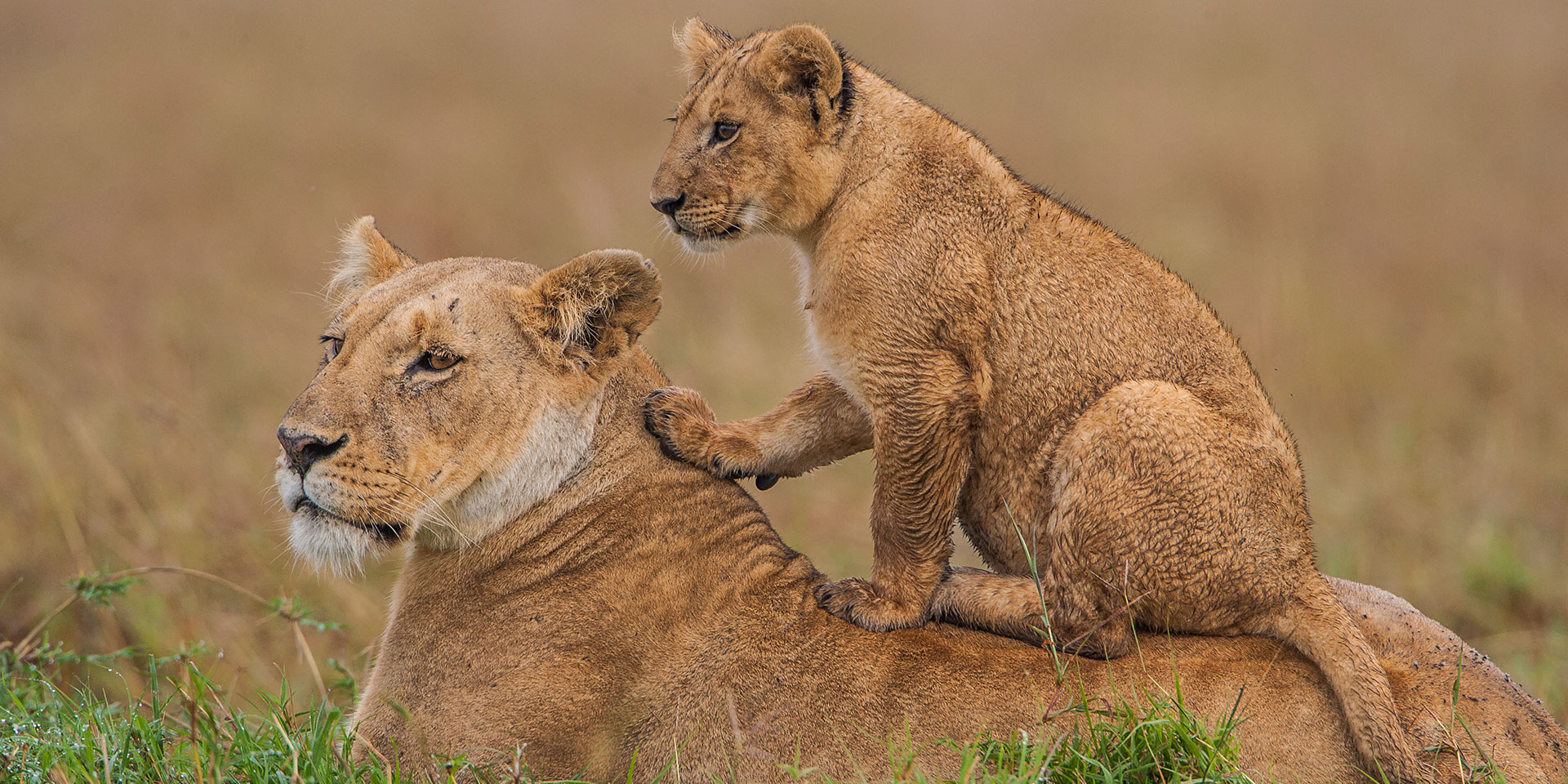Tsavo East National Park, Kenya
Tsavo East National Park is one of Kenya’s oldest and largest parks, this game reserve on 5,308 square miles houses lions & birds. The sight of dust-red elephant wallowing, rolling and spraying each other with the midnight blue waters of palm-shaded Galana River is one of the most evocative images in Africa. This, along with the 300-kilometre-long Yatta Plateau, the longest lava flow in the world, make for an adventure unlike any other in the Tsavo East.
The park forms the largest protected area in Kenya and is home to most of the larger mammals, vast herds of dust –red elephant, Rhino, buffaloes, lion, leopard, pods of hippo, crocodile, water bucks, lesser Kudu, gerenuk and the prolific bird life features 500 recorded species.
Bird watching is best between October and January, with many migratory birds including: African skimmers, red and yellow bishops, goshawks, buffalo weavers and palm nut vultures, to name but a few. Over 500 bird species have been recorded in the park, including ostriches, kestrels, buzzards, starlings, weaver birds, kingfishers, horn bills, secretary birds and herons.
Game drives are designed to take you close to the wildlife rich spots in the Tsavo East and West Park. This gives you an opportunity to view wild animals in their natural habitat as they go about their daily activities. Game drives are done during the day or night time. Night game drives are however not allowed in the reserve.
It is recommended that you use a driver/familiar with the area, able to give you lots of information about the animals and their habitat, and know where they can currently be found and how best to approach them. However, one can opt for a self-drive safari on condition that you are familiar with the rules and regulations of the Park.
Rock Climbing: In 1978 Bill Woodley, then the warden of Tsavo West, invited the Mountain Club of Kenya (MCK) to explore the cliffs in the park. The setting for climbers is superb with elephant roaming the plains below the cliffs and eagles, vultures and falcons circling on thermals around the crags with Kilimanjaro frequently visible on a clear day. The rock-climbing is some of the best in Kenya; solid gneiss walls are often covered in holds and free of vegetation. Cracks and corners abound, but tend to be more vegetated.
The most impressive piece of rock, the 300m high east face of Kichwa Tembo, attracted the first explorers and resulted in the ascent of Great Tsavo Chimney. Mastadon took 3 visits before it was completed. A more recent route, Ivory Tower on Elephant Rocks, ranks with the best and hardest bush climb in Kenya. Generally pegs need not be carried. Unless climbing in the shade, an early start is advisable as it often gets very hot on clear days. The permit the MCK has to climb here, and to camp by the Tsavo River, is a special privilege and every effort must be made not to jeopardize this situation by careless actions. Other climbers should initially contact the MCK if wishing to climb here.
Sightseeing: The Park is divided into Tsavo West and Tsavo East. Tsavo West National Park is covered with volcanic cones and rocky ridges. Rich vegetation, volcanic landscape with dense forests are the appeal of the western region of Tsavo. Tsavo East National Park has more open Savannah and the region is popular for its large numbers of elephants. The scrub covered hills add to the beauty of the eastern region of Tsavo. Lugard Falls on the Galana River, Mzima Springs and Yatta Plateau are the interesting sights in Tsavo.
Lugard Falls is actually a series of rapids and Mzima is a favourite hangout for hippos and crocodiles. There is an underwater viewing chamber where you can observe thousands of primordial looking fish. About 50 million gallons of crystal-clear water flow out into Mzima Springs every day. Yatta Plateau is the world’s longest lava flows stretching 290 kms.


